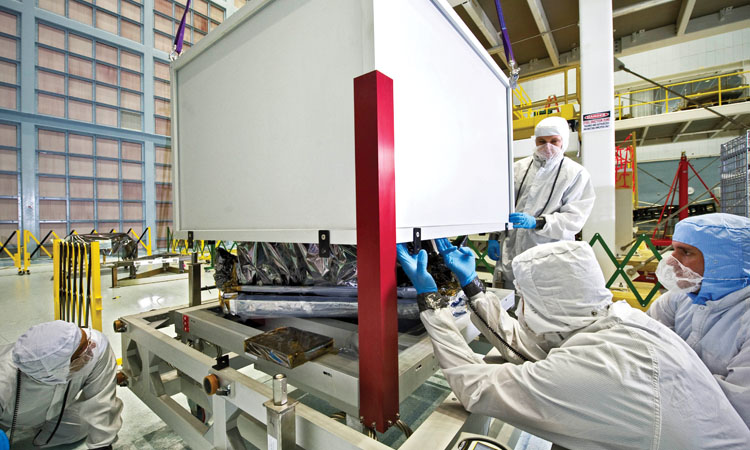Feature
Marvelous MIRI
The Webb Space Telescope’s Mid-Infrared Instrument—the coolest optical gadget in space—is getting ready for its close-up.
 Engineers and scientists in the cleanroom at NASA Goddard Space Flight Center, USA, uncrate the just-delivered MIRI instrument from its shipping container on 30 May 2012. [NASA/C. Gunn]
Engineers and scientists in the cleanroom at NASA Goddard Space Flight Center, USA, uncrate the just-delivered MIRI instrument from its shipping container on 30 May 2012. [NASA/C. Gunn]
In late January 2022, the fully unfolded and deployed James Webb Space Telescope—decades in the making, at a cost of billions of US dollars—slipped into orbit around the L2 Lagrange point, 1.5 million km from Earth. Since then, much of the observatory’s story has been about waiting for things to cool down. Protected from solar heat by a tennis-court-sized sunshield and by the stable L2 orbit, which keeps the Earth between the sun and the spacecraft, the three near-infrared cameras and spectrographs in Webb’s Integrated Science Instrument Module (ISIM) must gradually, passively settle to a temperature of 40 K before they can be readied to gaze into the deepest cosmos.
…Log in or become a member to view the full text of this article.
This article may be available for purchase via the search at Optica Publishing Group.
Optica Members get the full text of Optics & Photonics News, plus a variety of other member benefits.
